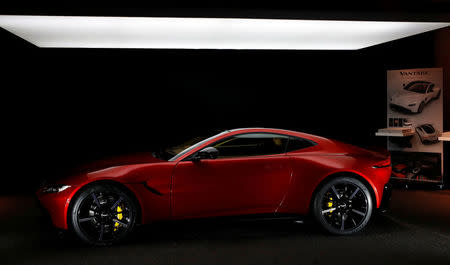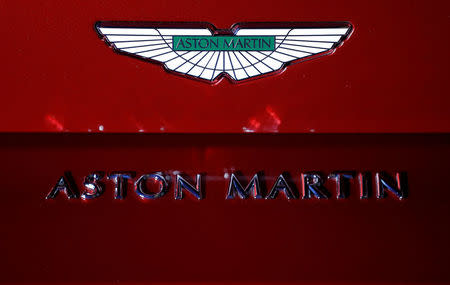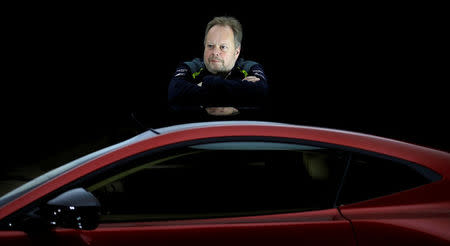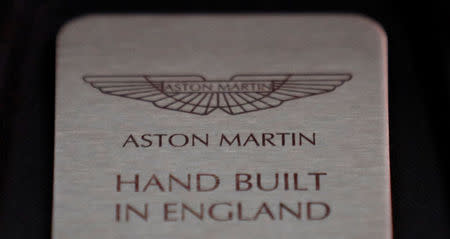Aston Martin's turnaround plan moves up a gear with Vantage model
By Costas Pitas
GAYDON, England (Reuters) - Luxury British carmaker Aston Martin unveiled its new Vantage model on Tuesday, as it pursues a turnaround plan designed to return it to profitability and set up a possible stock market flotation.
The central England-based firm, famed for making the sports car driven by fictional secret agent James Bond, is on course this year for its first pre-tax profit since 2010, spurred by sales of its new DB11 model.
With the Vantage, Aston Martin hopes to reach full capacity of 7,000 sports cars at its Gaydon plant in 2019, which would be the most cars it has produced for a decade, underscoring how crucial success of the new model is.
"It's important fiscally because it is the car that really moves us into that positive free cash flow territory, but I think it was also important industrially because you are now talking about a plant that is full," Chief Executive Andy Palmer told Reuters during an interview at the firm's headquarters.
The sleek two-seater model, which the firm says will stand out from rivals partly due to its simplistic design, will cost just over 120,000 pounds in Britain and $150,000 in the United States.
Aston is also building a new factory in Wales, where its first sports utility vehicle, known as the DBX, will roll off the production line from late 2019.
But British carmakers are worried Brexit could introduce customs checks and barriers that would slow down production processes and add extra bureaucratic costs.
Palmer, who said his biggest concern was the imposition of non-tariff barriers, said he was banking on a transitional agreement that would apply after March 2019, when Britain is due to formally exit the European Union.
"I'm working with that as a fundamental hypothesis so if there's not, then I have a problem."
"My investment cycle is based on the fact that there is a transition."
As Aston grows, Palmer has said its owners, mainly Kuwaiti and Italian private equity firms, could sell the company to a larger car group, other private equity firms or launch an initial public offering, but that the decision and timing were matters for the shareholders.
He said it made sense for them to consider their options before the end of the firm's current turnaround plan, which is due to complete in 2022.
"You want to sell in a period where the plan is partially proven but still got lots of growth potential in front of us," he said.
"Another year of demonstrating what we are doing and then I think beyond that it's going to depend on what the market's doing."
(Editing by Mark Potter)









